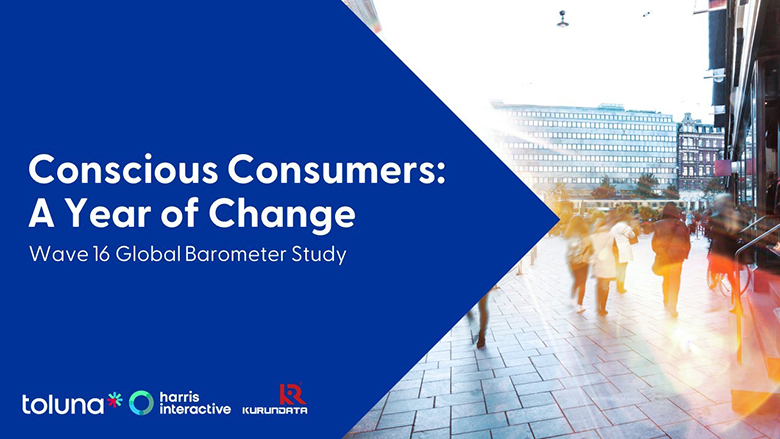Sponsored: F&B Outlook: The Shift Toward Plant-Based Diets and Other Consumer Trends

Toluna recently presented at the UK Food & Drink Trends Conference, providing insights to help brands adapt to consumer expectations and drive future success.
The top trends in the Food and Beverage (F&B) space fall under one overarching trend: the overwhelming support consumers show for brands aligning with their own values. The 16th wave of our Consumer Barometer—which has regularly tracked consumer sentiment since the start of the Covid-19 pandemic—shows that:
- 79% of consumers will go out of their way to engage with brands that align with their values
- 47% have stopped supporting brands that don’t align with their values
- 85% believe brands should be accountable to customers
Today’s companies are expected to clearly communicate what they stand for in order to form meaningful consumer connections. And with nearly half of consumers keeping their F&B supplies well-stocked in case of shortages (46%), attracting and retaining customers should remain at top of mind for brands in this industry.
Let’s take a look at the latest F&B-specific trends and what they mean for brands.
A third of consumers will go plant-based in the next year.
If you’ve noticed more plant-based items in the market and on menus, there’s sound reasoning behind it! Two in ten consumers say they exclude meat from their diet. In addition to those adopting plant-based diets, two-thirds of consumers report purchasing plant-based products.
To make informed decisions around new product development and ensure they reach their target audience, it’s important that brands know how — and why — consumers decide on which items to purchase (or leave on the shelf). Here’s what they say:
- Taste is the biggest factor (46%), followed by price (39%) and unprocessed, as-natural-as-possible options (27%). With regard to cost, specifically, 44% of consumers say plant-based products are too expensive
- 38% buy plant-based products because they’re better for your health, and 31% buy them because they’re made from natural ingredients
- 38% buy plant-based products because they’re better for the environment, and 31% for ethical reasons
Healthy, locally sourced products and ingredients are in.
Whether one plans to go plant-based or not, today’s consumer is more aware of the ingredients in food and beverage products, as well as where they were sourced.
With a steady uptick in consumers looking to shop locally, neighborhood shops are in luck. In fact, two in five consumers report buying more locally, and 33% say they’ll continue to. Similarly, one in four consumers report buying from independent stores, and 23% will continue to do so. Overall, an overwhelming 62% of consumers say they prefer to buy food products that are produced locally or in their home country.
For non-local brands that still want to catch the attention of their target audience, making impactful health claims or highlighting healthy ingredients are ways to cater to their current needs. Fifty-eight percent of consumers are more interested in the ingredients of food products, and 41% report trying to eat healthier meals.
Consumers are more open-minded with at-home cooking and trying new brands.
Thanks to restaurant closures and quarantines, 41% of consumers have experimented with cooking new meals at home and 38% say they’ll continue to do so. Sixteen percent also report having purchased new food preparation products.
With the uptick in home cooking, it’s important that brands evaluate the state of consumer loyalty—are they shopping for the same brands or thinking outside the box? On a global level, 19% of consumers are trying different food and drink brands and products. This escalates to 27% among Americans, who are displaying even more adventurousness than global counterparts.
This open-mindedness presents a significant opportunity for lesser-known brands to reach new consumers, and provides motivation for well-established brands to secure brand loyalty from consumers worldwide.
Consumers are also enjoying takeout and dining out.
In addition to supporting their favorite local restaurants in person, which 50% of consumers say they’ll do in the next month or two, 28% have ordered for delivery from those spots during the pandemic. Why?
- One in five customers are worried about restaurants closing and staff losing their jobs if they don’t show support
- 32% missed the social aspect of dining out
Just 13% of respondents report feeling worried about returning to local restaurants, underscoring the general sense of readiness and enthusiasm behind going out to eat.
Food and beverage brands that keep these trends in mind will be better equipped to make informed decisions about new product development and what will resonate most with consumers in today’s market.
Related content
Source: foodanddrinktechnology.com

